Callum McLaughlin's Blog, page 12
December 18, 2020
Most Anticipated Releases of 2021
It’s that lovely time in the book blog world when we start getting excited about all the great books coming our way next year. I have to admit I’ve been pretty bad at keeping up with bookish news recently, so I’m sure there are loads of amazing upcoming releases that aren’t on my radar yet (feel free to recommend any titles you’re particularly hyped about!). But that said, here are a few I’m already eager to get hold of when they hit shelves in 2021.
The Son of the House by Cheluchi Onyemelukwe-Onuobia
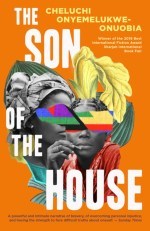 Two women – one who has led a life of privilege, one who has worked as a maid since she was 10, but both of whom have suffered under a patriarchal society – relay their life stories to each other when intense events lead to their confinement in a dank room together. I was sold as soon as I read that this debut is “set against four decades of vibrant Nigeria, and celebrates the resilience of women as they navigate and transform what remains a man’s world.”
Two women – one who has led a life of privilege, one who has worked as a maid since she was 10, but both of whom have suffered under a patriarchal society – relay their life stories to each other when intense events lead to their confinement in a dank room together. I was sold as soon as I read that this debut is “set against four decades of vibrant Nigeria, and celebrates the resilience of women as they navigate and transform what remains a man’s world.”
Published in May by Dundurn
The Lost Apothecary by Sarah Penner
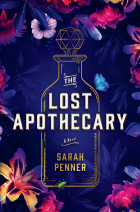 This sounds like it could be such a me book! “In this addictive and spectacularly imagined debut, a female apothecary secretly dispenses poisons to liberate women from the men who have wronged them—setting three lives across centuries on a dangerous collision course.”
This sounds like it could be such a me book! “In this addictive and spectacularly imagined debut, a female apothecary secretly dispenses poisons to liberate women from the men who have wronged them—setting three lives across centuries on a dangerous collision course.”
Presented as a dual narrative, split between the 1790s and present-day London, it sounds like this could be the feminist, gothic romp I need in my life.
Published in March by Park Row
The Secret Talker by Geling Yan, translated from the Chinese by Jeremy Tiang
 This is “a tense, gripping, and wholly original psychological tale of a woman with a secret admirer—who is hiding secrets of her own.”
This is “a tense, gripping, and wholly original psychological tale of a woman with a secret admirer—who is hiding secrets of her own.”
As Hongmei finds herself trapped in a cat-and-mouse game with a stalker, the façade of her seemingly perfect life begins to fall away, and her behaviour becomes increasingly self-destructive. I don’t need to know anything else to be hooked!
Published in March by HarperVia
Gratitude by Delphine de Vigan, translated from the French by George Miller
 I read Loyalties by the same author this year and loved it. I definitely want to explore her back catalogue, but this sounds amazing too. Unable to look after herself any longer, Michka has recently been moved into a home. Gradually losing her ability to communicate, she is paired with a speech therapist. But Michka has harboured a dark secret for years, and time is running out for her to unburden herself of this hidden shame. “Delicately wrought and darkly gripping, Gratitude is about love, loss and redemption; about what we owe one another, and the redemptive power of showing thanks.”
I read Loyalties by the same author this year and loved it. I definitely want to explore her back catalogue, but this sounds amazing too. Unable to look after herself any longer, Michka has recently been moved into a home. Gradually losing her ability to communicate, she is paired with a speech therapist. But Michka has harboured a dark secret for years, and time is running out for her to unburden herself of this hidden shame. “Delicately wrought and darkly gripping, Gratitude is about love, loss and redemption; about what we owe one another, and the redemptive power of showing thanks.”
Published in January by Bloomsbury
Milk Fed by Melissa Broder
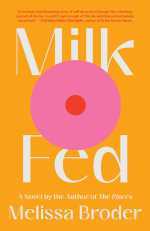 Broder’s previous novel, The Pisces, was very much a love-it-or-hate-it book. Fortunately, I was one of the people who loved it, hence why I’m intrigued to see what else she has to offer. In Milk Fed, we follow a young woman who has been raised to religiously count calories. When she distances herself from her mother, and becomes intoxicated by another woman, she begins to question her long-held, obsessive habits. Supposedly, “Broder tells a tale of appetites: physical hunger, sexual desire, spiritual longing, and the ways that we as humans can compartmentalize these so often interdependent instincts.”
Broder’s previous novel, The Pisces, was very much a love-it-or-hate-it book. Fortunately, I was one of the people who loved it, hence why I’m intrigued to see what else she has to offer. In Milk Fed, we follow a young woman who has been raised to religiously count calories. When she distances herself from her mother, and becomes intoxicated by another woman, she begins to question her long-held, obsessive habits. Supposedly, “Broder tells a tale of appetites: physical hunger, sexual desire, spiritual longing, and the ways that we as humans can compartmentalize these so often interdependent instincts.”
Published in February by Scribner
Klara and the Sun by Kazuo Ishiguro
 I suspect this one will be cropping up on a lot of people’s lists, since it’s his first release since winning the Nobel Prize for Literature. Looking at the rise of AI and the shifting definition of what it means to be human, we follow the perspective of an “Artificial Friend” as she observes those who browse the store in which she waits to be bought. It’s “a thrilling book that offers a look at our changing world through the eyes of an unforgettable narrator, and one that explores the fundamental question: what does it mean to love?”
I suspect this one will be cropping up on a lot of people’s lists, since it’s his first release since winning the Nobel Prize for Literature. Looking at the rise of AI and the shifting definition of what it means to be human, we follow the perspective of an “Artificial Friend” as she observes those who browse the store in which she waits to be bought. It’s “a thrilling book that offers a look at our changing world through the eyes of an unforgettable narrator, and one that explores the fundamental question: what does it mean to love?”
Published in March by Faber & Faber
The Natural Mother of the Child by Krys Malcolm Belc
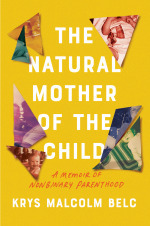 I wouldn’t often be drawn to nonfiction that explores parenthood, but as a nonbinary transmasculine parent who has carried a child, Belc is uniquely positioned to offer a fresh take on a well-worn theme. A memoir in essays, the book delves into Belc’s thoughts on gender, identity, and societal expectations, as he seeks to transcend the limitations of the “before” and “after” approach that so often dominates trans stories.
I wouldn’t often be drawn to nonfiction that explores parenthood, but as a nonbinary transmasculine parent who has carried a child, Belc is uniquely positioned to offer a fresh take on a well-worn theme. A memoir in essays, the book delves into Belc’s thoughts on gender, identity, and societal expectations, as he seeks to transcend the limitations of the “before” and “after” approach that so often dominates trans stories.
Published in June by Counterpoint Press
Mirrorland by Carole Johnstone
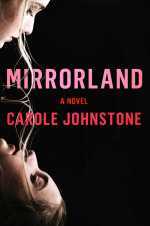 Thank you to Rachel for bringing this one to my attention with her own list of anticipated releases!
Thank you to Rachel for bringing this one to my attention with her own list of anticipated releases!
We follow a woman who returns to her childhood home in Edinburgh after the disappearance of her twin sister. “A twisty, dark, and brilliantly crafted thriller about love and betrayal, redemption and revenge, Mirrorland is a propulsive, page-turning debut about the power of imagination and the price of freedom.” I mean, a gothic mystery set in one of my favourite cities? Yes, please!
Published in April by Scribner
Madam by Phoebe Wynne
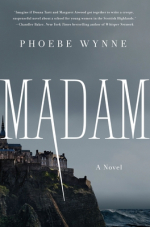 Speaking of gothic mysteries set in Scotland that Rachel brought to my attention, this follows a young woman who takes up a teaching position at a remote all girls boarding school on a craggy peninsula. Her modern approach soon clashes with the school’s traditional methods, and the abrupt departure of her predecessor begins to look increasingly suspicious. Sign me up, please and thank you.
Speaking of gothic mysteries set in Scotland that Rachel brought to my attention, this follows a young woman who takes up a teaching position at a remote all girls boarding school on a craggy peninsula. Her modern approach soon clashes with the school’s traditional methods, and the abrupt departure of her predecessor begins to look increasingly suspicious. Sign me up, please and thank you.
Published in May by St. Martin’s Press
Redder Days by Sue Rainsford
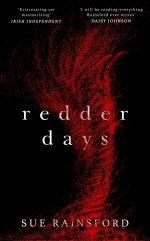 I really liked Rainsford’s singular, otherworldly debut, Follow Me to Ground. Her new novel follows twins Anna and Adam, who live in an abandoned commune with only its controlling former leader for company. They spend their days keeping watch, preparing for the doomsday event they are sure is coming, but when a past resident of the commune returns, everything the twins know is thrown into question. “Dazzling, strange and incredibly moving, Redder Days is a stunning exploration of the consequences of power wielded by the wrong hands, the emotional impact of abandonment, and the resilience of the human spirit in the most hopeless of situations.”
I really liked Rainsford’s singular, otherworldly debut, Follow Me to Ground. Her new novel follows twins Anna and Adam, who live in an abandoned commune with only its controlling former leader for company. They spend their days keeping watch, preparing for the doomsday event they are sure is coming, but when a past resident of the commune returns, everything the twins know is thrown into question. “Dazzling, strange and incredibly moving, Redder Days is a stunning exploration of the consequences of power wielded by the wrong hands, the emotional impact of abandonment, and the resilience of the human spirit in the most hopeless of situations.”
Published in March by Doubleday
Magma by Thora Hjorleifsdottir, translated from the Icelandic by Meg Matich
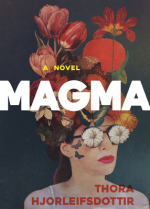 This novella sounds like it could really pack a punch, as we follow a 20-year-old woman who finds herself trapped in an increasingly toxic relationship, and the damage this has on her sense of self. It “sheds light on the commonplace undercurrents of violence that so often go undetected” and “deftly illustrates the failings of psychiatric systems in recognizing symptoms of cruelty”. I love Iceland and have been keen to explore more of its literature, so this sounds like a great place to head next.
This novella sounds like it could really pack a punch, as we follow a 20-year-old woman who finds herself trapped in an increasingly toxic relationship, and the damage this has on her sense of self. It “sheds light on the commonplace undercurrents of violence that so often go undetected” and “deftly illustrates the failings of psychiatric systems in recognizing symptoms of cruelty”. I love Iceland and have been keen to explore more of its literature, so this sounds like a great place to head next.
Published in July by Grove Atlantic
Unsettled Ground by Claire Fuller
 I’ve previously read and thoroughly enjoyed a couple of Fuller’s other novels. She writes quietly sinister literary fiction with keen psychological insight, and she does it so well.
I’ve previously read and thoroughly enjoyed a couple of Fuller’s other novels. She writes quietly sinister literary fiction with keen psychological insight, and she does it so well.
Her new novel sounds like it could offer up a similar vibe, which I’m very pleased about. It follows a set of 51-year-old twins who have lived with their mother their entire lives, sheltered from society. When she dies, their sanctuary falls under threat and they must question everything they think they know about the world.
Published in January by Fig Tree
The Haunting Season: Nine Ghostly Tales for Long Winter Nights
 This kind of does what it says on the tin, but what it says on the tin sounds right up my street. Plus, the line-up of authors included in this anthology is amazing, with several whose work I’ve already adored, like Sara Collins, Laura Purcell, Elizabeth Macneal, and Kiran Millwood Hargrave.
This kind of does what it says on the tin, but what it says on the tin sounds right up my street. Plus, the line-up of authors included in this anthology is amazing, with several whose work I’ve already adored, like Sara Collins, Laura Purcell, Elizabeth Macneal, and Kiran Millwood Hargrave.
With a couple of others in the mix I’ve been meaning to try for a while, I’m hoping this could be a perfect book to pick up when Halloween rolls around again.
Published in October by Sphere
Circus of Wonders by Elizabeth Macneal
 Speaking of Elizabeth Macneal, I adored The Doll Factory when I read it earlier this year and I’m so excited to hear she has another gothic historical fiction novel coming out soon. Set in Coastal England in 1866, Nell is ostracised for the birthmarks that cover her body. Though she suffers the ultimate betrayal when her father sells her to a Circus of Wonders, she soon finds kinship with her fellow performers. But when her unexpected stardom threatens to eclipse that of the showman who bought her, the novel becomes “an astonishing story about power and ownership, fame and the threat of invisibility.”
Speaking of Elizabeth Macneal, I adored The Doll Factory when I read it earlier this year and I’m so excited to hear she has another gothic historical fiction novel coming out soon. Set in Coastal England in 1866, Nell is ostracised for the birthmarks that cover her body. Though she suffers the ultimate betrayal when her father sells her to a Circus of Wonders, she soon finds kinship with her fellow performers. But when her unexpected stardom threatens to eclipse that of the showman who bought her, the novel becomes “an astonishing story about power and ownership, fame and the threat of invisibility.”
Published in May by Pan Macmillan
I’ll leave it there for now. By all means, let me know which 2021 releases you’re most excited for, and any you think I should have on my radar!
December 17, 2020
Rosa Bailey & Ruth Padel | Mini Reviews
The Robin and the Reindeer by Rosa Bailey, illustrated by Carmen Saldana
Published by Hachette Children’s Group, 2020
Rating: 



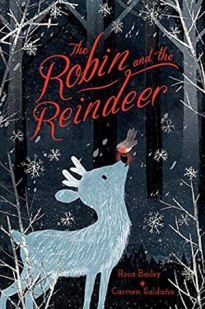 This charming children’s tale is sure to give you the warm fuzzies no matter your age. We follow a young reindeer who is separated from her herd during a snowstorm. With the help of a plucky robin’s glowing red breast to guide her through the snow, she must learn to be brave so she can reunite with her family.
This charming children’s tale is sure to give you the warm fuzzies no matter your age. We follow a young reindeer who is separated from her herd during a snowstorm. With the help of a plucky robin’s glowing red breast to guide her through the snow, she must learn to be brave so she can reunite with her family.
Saldana’s art is beautiful. It perfectly encapsulates the whimsy of the story, further enhancing the vivid imagery of the text and the fable-esque feel. The prose itself is surprisingly lovely for a book aimed at young children (It’s hard to pin down, but I’d say the language and text length place the book half-way between a picture book and a middle grade novel).
It’s understandably simple, but there are fun elements that mean the book can serve as both a possible explanation behind Rudolph’s iconic red nose (no spoilers, but I’m sure you can guess what I’m hinting at), and as a charming take on the magic behind the northern lights.
Ideal cosy escapism on a cold winter’s day for young and old alike.
Tidings by Ruth Padel
Published by Chatto & Windus, 2016
Rating: 


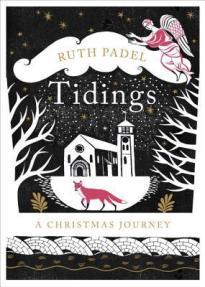 This full-length narrative poem is told from the perspective of the Angel of Silence, who gains a voice for 24-hours each Christmas. As dawn breaks, he weaves through time and place, observing traditions that have come and gone, but primarily he watches over two people in London who are experiencing the holiday in very different ways: A 7-year-old girl full of excitement for the big day to arrive, and a 44-year-old homeless man who wanders the streets in the footsteps of an urban fox he has befriended.
This full-length narrative poem is told from the perspective of the Angel of Silence, who gains a voice for 24-hours each Christmas. As dawn breaks, he weaves through time and place, observing traditions that have come and gone, but primarily he watches over two people in London who are experiencing the holiday in very different ways: A 7-year-old girl full of excitement for the big day to arrive, and a 44-year-old homeless man who wanders the streets in the footsteps of an urban fox he has befriended.
The poem is admirable if heavy-handed in the delivery of its messages: that somewhere along the way, we have lost the true meaning of Christmas; that as much as it’s a time full of magic and wonder, it can also be a time of great sadness; and that through kindness and connection we can find hope.
There are a couple of nice turns of phrase, but for the most part I found the text itself very straightforward, lacking the visual flair or emotional resonance that would have made a lasting impact. As it is, this was a fine, well intentioned read, but not one destined to be a classic I’ll come back to each year.
December 13, 2020
Earthlings by Sayaka Murata | Book Review
Earthlings by Sayaka Murata, translated from the Japanese by Ginny Tapley Takemori
Published by Granta, 2020
Rating: 



 Though it is concerned with the same core concept of individuals who reject the roles set out for them by society, Earthlings is a far bolder and more twisted affair than the author’s previous hit, Convenience Store Woman. Frankly, I think it’s all the better for it. While the latter ultimately left me feeling underwhelmed, love it or loathe it, I can’t see how Earthlings could fail to elicit a strong response from any reader.
Though it is concerned with the same core concept of individuals who reject the roles set out for them by society, Earthlings is a far bolder and more twisted affair than the author’s previous hit, Convenience Store Woman. Frankly, I think it’s all the better for it. While the latter ultimately left me feeling underwhelmed, love it or loathe it, I can’t see how Earthlings could fail to elicit a strong response from any reader.
We follow Natsuki. She struggles to fit in as a child and believes she may be a witch, appearing to call upon her vivid imagination as a means of escape from trauma and abuse. She forms a powerful, intimate relationship with her cousin, Yuu, the two agreeing that perhaps they’re not originally from Earth at all. Shocking events tear the two apart for more than 20 years, by which time Natsuki has entered an asexual marriage of convenience to appease her family. But a reunion with Yuu reignites her desire to find a way of escaping the trappings of what she calls “The Factory”; the rigid, gendered roles set out for us all by society, with its particular emphasis on procreation – the idea of which repulses her. Natsuki, her husband, and Yuu will go to extreme lengths to make this happen.
I love the way the book toes the line when it comes to its flirtation with magical realism. It becomes a powerful way to explore the notion of storytelling as a method of self-protection; a theme which I adore. It also makes Natsuki a fascinatingly unreliable narrator. Alongside this, the book is primarily concerned with the concept of freewill and whether it’s truly possible to live with no sense of community, and perhaps even without our own humanity.
The latter portion of the book descends into full-tilt madness. Rather than the characters gradually removing themselves from society and degrading slowly, the switch happens incredibly quickly, making it pretty hard to believe. The point the book is trying to make also becomes less clear as a result. Shocking and haunting though the final chapter is, the characters we had previously been rooting for to escape and achieve true autonomy over their lives become so irredeemable that life out with “The Factory” seems even less appealing than life inside it. Perhaps it was her intention to imply that outsiders are doomed regardless of whether they concede or resist, and this theme is certainly valid and worth exploring, but the execution and the stance she’s approaching it from feel uneven when the book is examined as a whole.
Still, this novel will certainly stay with me. Provocative and compelling in equal measure, I raced through it and found myself in something of a daze by the time I reached the end. If you’re drawn to the theme of society versus the individual and have a strong stomach, it’s certainly worth taking a chance on it.
December 9, 2020
Surge by Jay Bernard | Book Review
Surge by Jay Bernard
Published by Chatto & Windus, 2019
Rating: 



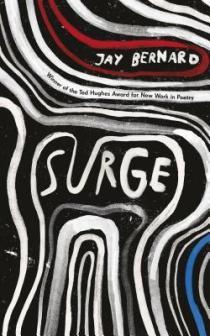 In this collection of poems, Bernard explores two tragedies that took place within the UK’s recent history, both of which had a disproportionately devastating impact on the Black community. These are the New Cross Massacre, a fire that killed 13 young people in 1981 and which many believed to be a racist attack, and the Grenfell Tower disaster in 2017, when a block of flats was engulfed in flames, killing 72 people, many of whom were migrants and asylum seekers.
In this collection of poems, Bernard explores two tragedies that took place within the UK’s recent history, both of which had a disproportionately devastating impact on the Black community. These are the New Cross Massacre, a fire that killed 13 young people in 1981 and which many believed to be a racist attack, and the Grenfell Tower disaster in 2017, when a block of flats was engulfed in flames, killing 72 people, many of whom were migrants and asylum seekers.
When researching both incidents, Bernard was struck by the similarities in the poor handling of the aftermath, exposing the persistence of systemic racism, economic inequality, and bias within the police and media. Written against the backdrop of the further Windrush scandal, this collection is undoubtedly at its strongest when it pulls back to comment on such issues more broadly. Some poems attempt to give a more intimate first-person voice to victims, and I appreciate the intent here. A couple of pieces towards the end are more personal, exploring the poet’s experiences regarding the intersection between Blackness and queerness. Though these are equally valid and important topics, the rest of the collection has such a tight thematic focus that they felt a little out of place.
Bernard has a beautiful turn of phrase, but the poems that hit me hardest were arguably the most simplistic, the vivid imagery and tangible pain of Arrival and Stone being real highlights.
remember we were brought here from the clear waters of our dreams
that we might be named, numbered and forgotten
that we were made visible that we might be looked on with contempt
that they gave us their first and last names that we might be called wogs
and to their minds made flesh that it might be stripped from our backs
– From Arrival
autumn
in all its orange dresses sipping rain in Fordham Park
a tyre swing eclipses the world within its hoop
I have found the stone with the names of all the dead
I sit
and meet the stone’s cold pink mirror
garbled sun
thirteen names
every year
I hear summer ask how autumn
can endure
winter’s undoing
– From Stone
On the whole, this is a powerful, well informed collection that bares many of the uncomfortable yet necessary truths kept silent for far too long.
December 1, 2020
Bookish Christmas Gift Guide 2020
Most of us are likely to be celebrating Christmas a little differently this year, but that doesn’t mean we can’t still treat those we love (or ourselves) to something nice. I’ve put together a bookish gift guide the past four years running (you can find them here if you’d like more ideas: 2019, 2018, 2017, & 2016), but without further ado, here are some gift suggestions for the bookworms in your life.
BOOKISH GAMES
With all of us spending more time at home these days, a game with a bookish twist could help entertain many a reader throughout the holiday season. There are loads of options out there, including The Writers Game, which is essentially bookish top trumps with beautifully illustrated cards, and Ex Libris, where you have to try and outsmart your opponents by coming up with fake – but convincing – first and last lines from famous books.
[image error]
A READING JOURNAL
Anyone who uses Goodreads likely knows how… frustrating it can be at times. With more and more readers seeking out an alternative means of documenting their reads and managing their TBR, why not go old school and treat someone to a journal that allows them to track their reading for the year ahead? Here are some examples, available from The Literary Gift Company.
[image error]
BOOK SLEEVES
If you or someone you know always likes to have a book with them on the go, a book sleeve is a great little gift. It’s essentially a pouch to put your book in so it doesn’t get bashed around or dirty if you’re throwing it in your bag. Plus, you can get some really pretty designs, like these examples from The Story Gift.
[image error]
‘POETRY INSTEAD OF A CARD’
Candlestick Press publish a really cool range of pamphlets called ‘Poetry Instead of a Card’. As the name suggests, the idea is you can send someone a mini book of ten poems as an alternative to a standard greetings card. There are several specifically Christmas themed pamphlets within the range, but there are loads to choose from; be it pamphlets that explore a particular theme – like friendship, happiness, or love – or pamphlets that focus on a specific subject – like cats, flowers, or art. And don’t worry, you can still write the recipient a message; each one comes with a bookmark with space that has been left for you to personalise it.
[image error]
BOOK LAMPS
Book inspired lamps look gorgeous *and* they give off lovely ambient lighting that is perfect for a bit of night time reading. You can get a foldable LED lamp that looks like a regular book when closed, but which lights up when opened (like this one from Not on the Highstreet), and a lamp which doubles as a book stand, saving your page and looking like an adorable little house as it does so (like this one designed by Lee Sang Gin). What’s not to love?
[image error]
BOOKISH TEA
It may be a bit of a stereotype, but it’s true that many bookworms do enjoy a good cup of tea. A nice mug is a great choice, but you could go one better and get some actual tea to go with it. There are lots of great gift sets that tie in with specific reads; I think these Alice in Wonderland and Beatrix Potter themed offerings from New English Teas are particularly charming.
[image error]
BOOKISH CANDLES
I love the smell of books almost as much as I love reading them. Evidently, I’m not alone, as you can now find candles that give off that glorious between-the-pages scent. Frostbeard Studio stock just such candles, as well as various others with fragrances that take inspiration from specific books and franchises.
[image error]
BOOKISH CLOTHING
You can get clothing with fun, generically bookish slogans/designs on them (I was gifted a T-shirt last year that says ‘Cats, Books, Tea’ on it, for example), or you could find someone an item that ties in with one of their favourite reads if you want it to be a little more personal. Literary Emporium have some really beautiful options, with quotes and motifs that draw from beloved books. I think their designs are understated but really effective.
[image error]
BEAUTIFUL BOOKS
I couldn’t write a bookish gift guide without including some actual books, could I? I think books with a strong visual element make particularly nice presents, since they’re beautiful objects as much as they are enjoyable to read. With that in mind, here are a couple of lovely books, both of which I highly recommend, and both of which I think could be enjoyed by readers young and old alike.
Mythologica by Dr. Steve Kershaw & Victoria Topping
This encyclopaedia of gods, monsters, and mortals from Ancient Greece serves as a fantastic entry point or reference guide for those at all interested in mythology. The book highlights 50 key figures, giving us a snapshot of their role within the canon, but the real draw is Topping’s stunningly bold and stylised portraits of each character.
[image error]
The Lost Words by Robert Macfarlane & Jackie Morris
This book combines acrostic poems with wonderful artwork to celebrate the relationship between the natural world and the language we use to describe it – while reminding us how important it is to preserve both. The poems are highly approachable, playful, and engaging, with each one focussing on a different plant or animal, the name of which is disappearing from everyday use in children’s vocabularies; the idea being that we need to reconnect with the wonder of the world around us.
[image error]
There we have it! I hope you picked up a few useful ideas, and however you end up spending it this year, I hope you all have a lovely, safe festive period.
November 30, 2020
November Wrap Up
The books I read in November
November was a bit of an odd month. I read 8 books, bringing my total for the year so far up to 113. Not only is this slightly lower than my average, but most of them were fairly short, meaning I didn’t actually do a whole lot of reading. I’m not going to beat myself up about it. Firstly, I was definitely hit by a general slump/burnout, which was inevitably going to happen at some point this year. More randomly, I also really fell in love with embroidery this month. A lot of the time I would normally have spent reading was spent embroidering, but given how much I enjoy both, I can make my peace with that.
[image error]
The pieces I embroidered this month
That said, here are some brief thoughts on what I did read, with links to my full reviews if you’d like to know more.
Stillicide by Cynan Jones
[ 

 ] This series of linked short stories is set in a dystopian future, with the climate crisis meaning water is now a commodity transported around the country via an armoured train. Jones writes beautifully, and there are some great ideas present, but its fragmented nature and lack of a driving force in the plot meant I failed to connect emotionally.
] This series of linked short stories is set in a dystopian future, with the climate crisis meaning water is now a commodity transported around the country via an armoured train. Jones writes beautifully, and there are some great ideas present, but its fragmented nature and lack of a driving force in the plot meant I failed to connect emotionally.
Hearts in the Hard Ground by G.V. Anderson
[ 


 ] Following the death of her mother, Fiona moves into a new house, but the ghosts of former residents haunt her new home as much as Fiona’s guilt and grief haunt her. Evoking hauntings both real and self-inflicted, with some striking imagery and a lot of heart throughout, this is an emotionally complex story that says a lot in few words about the frustration of dementia and the pain of letting go.
] Following the death of her mother, Fiona moves into a new house, but the ghosts of former residents haunt her new home as much as Fiona’s guilt and grief haunt her. Evoking hauntings both real and self-inflicted, with some striking imagery and a lot of heart throughout, this is an emotionally complex story that says a lot in few words about the frustration of dementia and the pain of letting go.
Pew by Catherine Lacey
[ 

 ] An enigmatic, unknowable stranger is found on a church pew in a conservative American town. Offers of help and open-mindedness are increasingly tested by the stranger’s refusal to adhere to strict societal roles regarding gender and ethnicity. This meditation on the idea of the body versus the person, and the individual versus the community simmers with tension and intrigue, but is let down by an info-dump ending that hints at so much untapped potential.
] An enigmatic, unknowable stranger is found on a church pew in a conservative American town. Offers of help and open-mindedness are increasingly tested by the stranger’s refusal to adhere to strict societal roles regarding gender and ethnicity. This meditation on the idea of the body versus the person, and the individual versus the community simmers with tension and intrigue, but is let down by an info-dump ending that hints at so much untapped potential.
Speak by Laurie Halse Anderson & Emily Carroll
[ 


 ] This graphic novel adaptation of Anderson’s original novel emphasises the story’s look at the importance that art can play in processing trauma. Encompassing the fallout of sexual assault, emotional trauma, depression, and social isolation, all carried by a realistically flawed heroine, this is as relevant now as it was when it was published in its original form back in 1999.
] This graphic novel adaptation of Anderson’s original novel emphasises the story’s look at the importance that art can play in processing trauma. Encompassing the fallout of sexual assault, emotional trauma, depression, and social isolation, all carried by a realistically flawed heroine, this is as relevant now as it was when it was published in its original form back in 1999.
The Dreamkeeper by Robert Ingpen
[ 

 ] An original tale from the renowned illustrator about an enigmatic character responsible for capturing the creatures that attempt to escape from our dreams. It’s brief, and there’s no real plot, but Ingpen’s accompanying artwork is as charming as ever.
] An original tale from the renowned illustrator about an enigmatic character responsible for capturing the creatures that attempt to escape from our dreams. It’s brief, and there’s no real plot, but Ingpen’s accompanying artwork is as charming as ever.
People from My Neighbourhood by Hiromi Kawakami, translated from the Japanese by Ted Goossen
[ 
 ] This collection of magical realism micro fiction falls firmly into the ‘weird for the sake of being weird’ category that sadly just doesn’t work for me. There are some visually striking ideas, but it feels like a scrapbook of jumping off points rather than a cohesive collection with any kind of narrative or thematic purpose.
] This collection of magical realism micro fiction falls firmly into the ‘weird for the sake of being weird’ category that sadly just doesn’t work for me. There are some visually striking ideas, but it feels like a scrapbook of jumping off points rather than a cohesive collection with any kind of narrative or thematic purpose.
All Boys Aren’t Blue by George M. Johnson
[ 

 ] This memoir reflects on Johnson’s experiences growing up Black and gay in modern-day America. He writes beautifully about his family and the coding of society to enforce a strict gender binary, but the essay-like, non-linear structure means it can lack a sense of overall direction at times. Still, it’s heartening that books like this will help the next generation of Black, queer youth feel validated and less alone.
] This memoir reflects on Johnson’s experiences growing up Black and gay in modern-day America. He writes beautifully about his family and the coding of society to enforce a strict gender binary, but the essay-like, non-linear structure means it can lack a sense of overall direction at times. Still, it’s heartening that books like this will help the next generation of Black, queer youth feel validated and less alone.
Let Them Eat Chaos by Kae Tempest
[ 



 ] A beautifully observed and powerfully delivered full-length narrative poem that gives us a snapshot into the lives of seven strangers who all live on the same street. It explores the anxieties of modern life, commenting on our collective sense of disenfranchisement and disconnection. Brilliant, galvanising, and ultimately hopeful.
] A beautifully observed and powerfully delivered full-length narrative poem that gives us a snapshot into the lives of seven strangers who all live on the same street. It explores the anxieties of modern life, commenting on our collective sense of disenfranchisement and disconnection. Brilliant, galvanising, and ultimately hopeful.
There we have it! My favourite read in November was Let Them Eat Chaos. What was yours?
November 29, 2020
George M. Johnson & Kae Tempest | Mini Reviews
All Boys Aren’t Blue by George M. Johnson
Published by Farrar, Straus and Giroux, 2020
Rating: 


[image error]This is Johnson’s memoir, reflecting on his experiences as a young Black gay man growing up in America. The book encompasses many big themes, including queerness, family, identity, racism, abuse, and masculinity.
I appreciated how frank and self-aware Johnson’s writing is. His commentary on the differences between sex and gender, and the coding of language, clothing and behaviour to uphold a strict binary and suppress queer expression is particularly excellent. The section which sees him write open letters to loved ones about the important roles they’ve played in his life is also very moving.
Though I found his voice consistently engaging, I will say a couple of the anecdotes shared felt somewhat tenuously linked to the points Johnson was trying to make. This meant they paled in comparison to the power and effectiveness of the book’s more successful sections. Due to its essay-like structure, the book is also non-linear in a way that can leave it feeling as though it lacks a sense of overall direction at times.
Queer youth (especially Black queer youth) will see so many of their own experiences reflected in Johnson’s work, and it’s great to know books like this will help the next generation feel less alone in their struggles.
Let Them Eat Chaos by Kae Tempest*
Published by Picador, 2016
Rating: 




[image error]This full-length narrative poem weaves in and out of the homes of seven people who all live on the same street in London, as they lie awake at 4am. They are strangers to each other, but through a series of snapshots into their lives, Tempest captures the universal anxieties of modern life, despite their different circumstances.
It’s remarkable how much Tempest can convey with few words, giving us a clear sense of each person and the struggles of their daily lives, while commenting on the wider societal problems of wealth disparity, disenfranchisement, and an increased sense of disconnection from the world around us – a theme that resonates particularly strongly in the current climate.
It’s hard to describe why I loved this so much, and to pull random extracts from it would do no justice to its cumulative power. Suffice to say it is beautifully observed, articulating with gut-punch wisdom so much of where we’re going wrong; in how we treat ourselves, in how we treat each other, and in how we treat the planet. But for all its pathos, it is also an impassioned and hopeful call for kindness and connection.
*The edition I read was first published when Tempest went by a different first name and used female pronouns. They have since come out as non-binary, go by the name Kae, and prefer the use of they/them. Please bear that in mind when reading/discussing their back catalogue of work.
November 26, 2020
One Night Two Souls Went Walking by Ellen Cooney | Book Review
One Night Two Souls Went Walking by Ellen Cooney
Published by Coffee House Press, 2020
Rating: 



[image error]Ruminative yet understated, this beguiling novel explores the fine line between life and death, and the elusive nature of the human soul.
In One Night Two Souls Went Walking, we follow a young interfaith chaplain as she carries out her nightly duties on a hospital ward, easing patients through their final moments and comforting loved ones in their newfound grief. She was drawn to the job through her fascination with the concept of souls – how they are formed, where they reside, and whether or not they ever truly leave. Though not hugely plot driven, we do see glimpses of the ways her unwavering dedication to this role has impacted her personal relationships, and through subtle hints of magical realism, the emotional toll it can take to so often be forced to say goodbye.
Despite the melancholy subject matter, the novel has a gentle quality that mirrors the narrator’s characterization. That said, Cooney hints at a complexity beyond simple kindness, showing us the white lies she is often compelled to tell in order to ease the woes of the dying so they may pass in peace.
You can read my full review over on BookBrowse . I also wrote a piece about Animal Assisted Therapy to go alongside it, which you can read here .
November 19, 2020
Hiromi Kawakami & Robert Ingpen | Mini Reviews
The Dreamkeeper by Robert Ingpen
Published by Minedition, 2006 (first published in 1995)
Rating: 


[image error]I’m a big fan of Ingpen as an artist and particularly like to collect his illustrated editions of children’s classics. This brief original tale started life as a project to entertain his granddaughter.
There’s no real narrative to speak of; it simply describes the various tasks of the eponymous dreamkeeper, an enigmatic character responsible for capturing and returning any monsters that attempt to escape from our dreams into the real world. It’s simple yet charming, with world-building that holds real potential for further development.
People from My Neighbourhood by Hiromi Kawakami, translated from the Japanese by Ted Goossen
Published by Granta, 2020
Rating: 

[image error]I knew heading into this one that it would be a gamble, since magical realism doesn’t often work for me. But, when it does it tends to be when it’s in short story format, and having heard such good things about Kawakami’s other work, I decided to give this collection of micro fiction a shot.
In order to suspend my disbelief, I prefer fabulist elements to be grounded by a strong narrative, a compelling character, or to at least have an obvious thematic meaning. But these interconnected tales fall firmly into the weird for the sake of being weird category that simply does nothing for me, and they are are all so fleeting that there’s no time to establish an emotional connection. There’s no denying the presence of fascinating and visually striking concepts, but it feels more like a scrapbook of ideas and jumping off points than a fleshed out, cohesive collection. It also falls into the trap of having an opening piece that is by far the most compelling; this initial promise heightening the later sense of disappointment.
Not for me, sadly.
Hiromi Kawakami & Robert Igpen | Mini Reviews
The Dreamkeeper by Robert Ingpen
Published by Minedition, 2006 (first published in 1995)
Rating: 


[image error]I’m a big fan of Ingpen as an artist and particularly like to collect his illustrated editions of children’s classics. This brief original tale started life as a project to entertain his granddaughter.
There’s no real narrative to speak of; it simply describes the various tasks of the eponymous dreamkeeper, an enigmatic character responsible for capturing and returning any monsters that attempt to escape from our dreams into the real world. It’s simple yet charming, with world-building that holds real potential for further development.
People from My Neighbourhood by Hiromi Kawakami, translated from the Japanese by Ted Goossen
Published by Granta, 2020
Rating: 

[image error]I knew heading into this one that it would be a gamble, since magical realism doesn’t often work for me. But, when it does it tends to be when it’s in short story format, and having heard such good things about Kawakami’s other work, I decided to give this collection of micro fiction a shot.
In order to suspend my disbelief, I prefer fabulist elements to be grounded by a strong narrative, a compelling character, or to at least have an obvious thematic meaning. But these interconnected tales fall firmly into the weird for the sake of being weird category that simply does nothing for me, and they are are all so fleeting that there’s no time to establish an emotional connection. There’s no denying the presence of fascinating and visually striking concepts, but it feels more like a scrapbook of ideas and jumping off points than a fleshed out, cohesive collection. It also falls into the trap of having an opening piece that is by far the most compelling; this initial promise heightening the later sense of disappointment.
Not for me, sadly.



